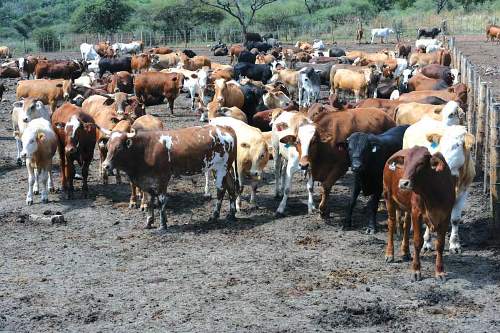Livestock farming is a cornerstone of Africa’s agricultural sector, providing food, income, and employment to millions across the continent. Unlike in Western countries, where cattle, sheep, and pigs dominate, African livestock farming is more diverse, including indigenous cattle breeds, goats, sheep, camels, donkeys, and oxen—all uniquely adapted to different climates and farming systems.
Africa’s Livestock Landscape
Livestock accounts for a significant share of the continent’s agricultural output, supporting both subsistence farmers and commercial enterprises. Across Africa, traditional herding and pastoralism remain widespread, particularly in arid and semi-arid regions, where hardy breeds like the Ankole-Watusi, Boran, Nguni cattle, and Red Maasai sheep thrive under harsh conditions.
The continent’s livestock biomass is immense, contributing to food security and economic stability. Studies suggest that the combined weight of domesticated livestock far exceeds that of Africa’s wild mammals and birds, reinforcing their importance in rural livelihoods.
Cattle: The Backbone of African Livestock Farming
Cattle (genus Bos) play a crucial role in meat and dairy production, but they also serve as draft animals and a source of wealth in many African societies. Key indigenous breeds include:
- Ankole-Watusi – Known for their striking long horns and resilience in dry conditions.
- Boran – A hardy East African breed valued for its beef quality and disease resistance.
- Nguni – A South African breed prized for its fertility, adaptability, and strong resistance to local parasites.
While cattle primarily graze on natural pastures, many farmers supplement their diet with nutrient-rich feed, particularly in commercial dairy and beef production systems. However, challenges such as land degradation, drought, and disease outbreaks (e.g., foot-and-mouth disease, Rift Valley fever) threaten productivity.
The Role of Goats, Sheep, and Camels in African Farming
- Goats and Sheep – With their ability to thrive in diverse environments, goats (e.g., Boer, West African Dwarf) and sheep (e.g., Red Maasai, Dorper) are key sources of meat, milk, and hides. Goats, in particular, are crucial for smallholder farmers due to their low maintenance and high reproductive rates.
- Camels – In North and East Africa, camels provide milk, meat, and transport in arid regions. The dromedary camel is vital to pastoralist communities like the Somali, Afar, and Tuareg people.
Challenges and Opportunities in African Livestock Farming
Despite its importance, livestock farming in Africa faces significant challenges, including:
- Climate change and drought – Affecting pasture availability and water sources.
- Disease outbreaks – Threatening both smallholder and commercial farms.
- Market access and value addition – Farmers often struggle to get fair prices and maximize profits.
However, opportunities abound, with growing interest in:
- Sustainable livestock management – Improved grazing systems and water conservation.
- Livestock genetics and breeding – Programs to enhance disease resistance and productivity.
- Value-added livestock products – Expanding meat, dairy, and leather industries to boost incomes.
The Future of Africa’s Livestock Sector
As demand for high-quality meat and dairy products rises across Africa, the livestock sector has enormous potential for growth. Investment in modern veterinary care, feed production, and livestock markets will be crucial in ensuring sustainable development. By combining traditional knowledge with modern innovations, Africa’s livestock farmers can enhance productivity while preserving indigenous breeds and ecosystems.
With strategic policies and innovations, Africa’s livestock industry can not only sustain rural communities but also become a key driver of economic growth and food security.



